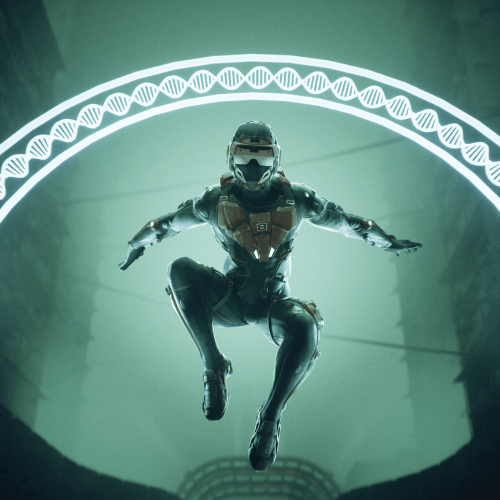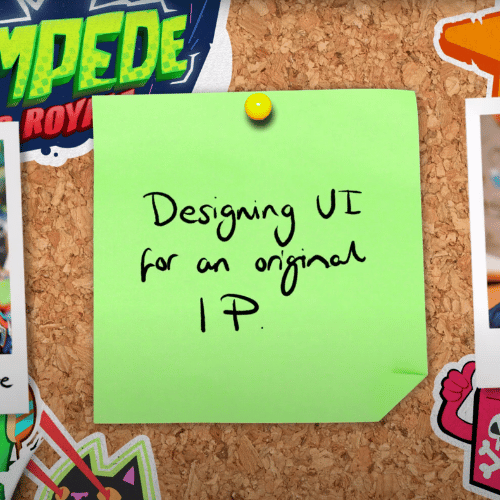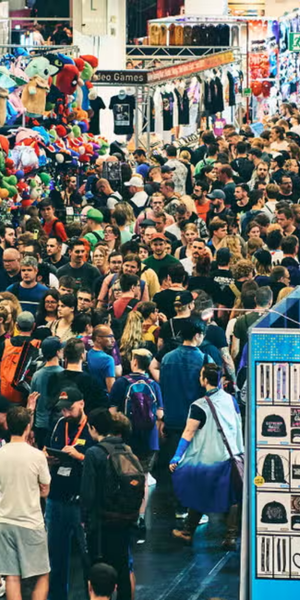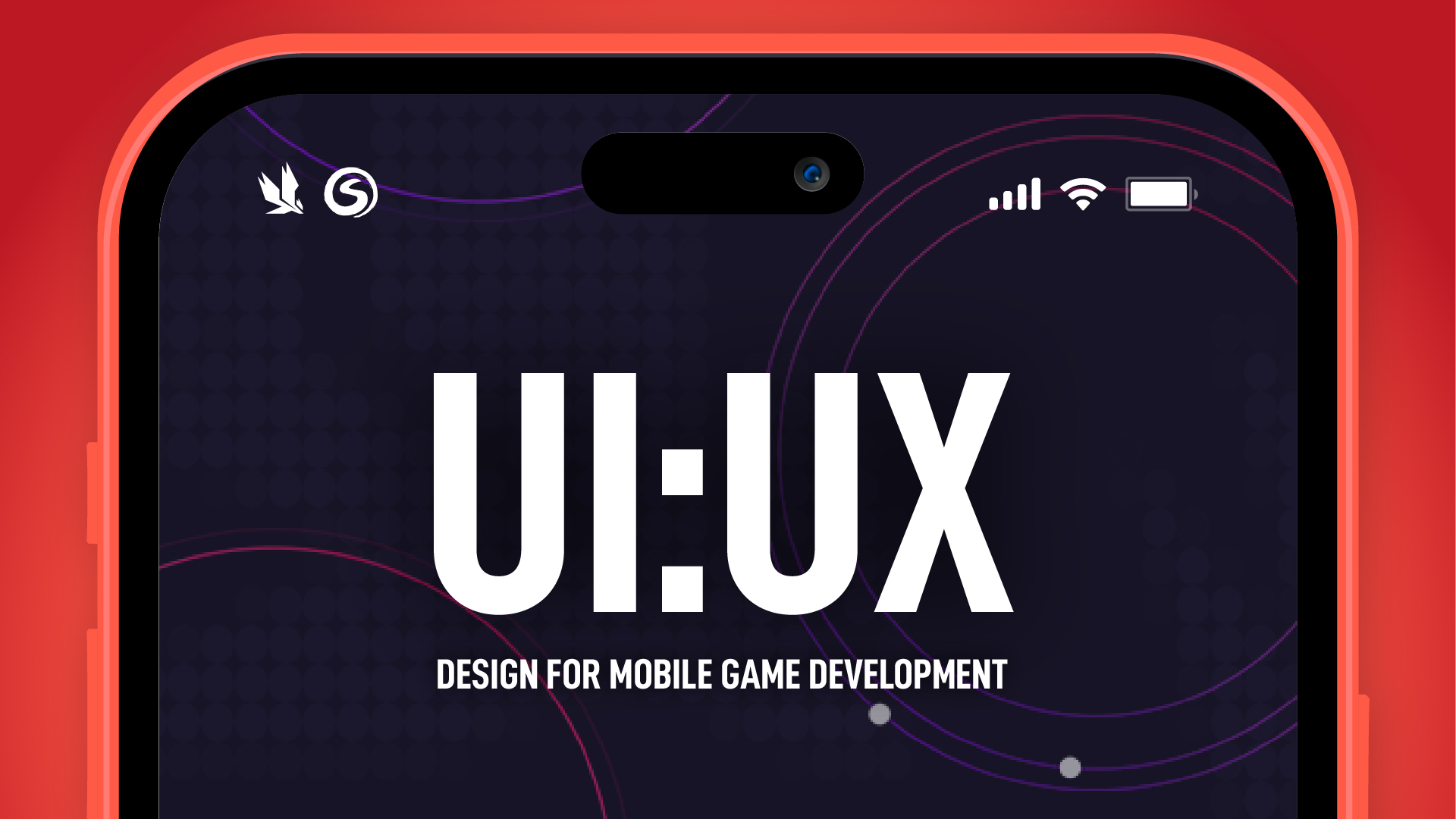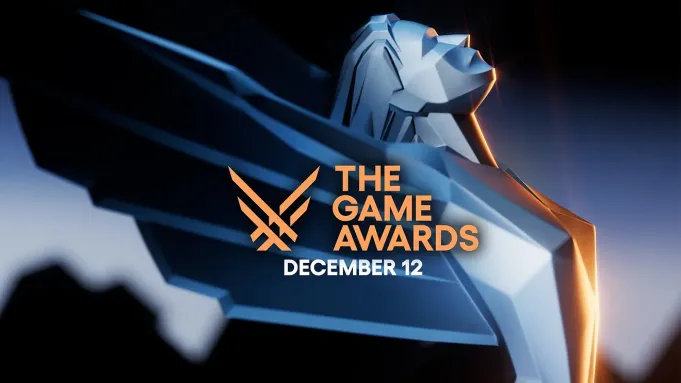It was reported earlier this year that Microsoft is looking to port some of its exclusive titles to PlayStation 5 and Nintendo Switch in a bid to ‘reach as many players as possible’. Xbox is yet to confirm which games will be making their way over to these platforms, but one thing is for sure: specialists in porting are hard at work on ensuring these experiences are delivered to their fullest potential for new players to enjoy.
But what is porting? Porting is the process of adapting a game – which has often been designed for a specific platform – to run on another. So whether you’re looking to experience the rush of Fall Guys on Nintendo Switch and take those colourful Beans on the road, or to get cosy in your living room to take in the details of A Little to the Left on the big screen – a port can welcome new audiences to fall in love with your game, and play it their way.
One team who know plenty about porting, the intricacies of infrastructure and have some serious tech and tools talent is Lab42. Recently, the Leamington-based studio has been working with some exceptional partners to port beloved games to new platforms.
Here, the studios’ team of porting pros break down the process of porting, why publishers can benefit from exposing their game to new audiences, and the details within a ported game that can skyrocket a title to new heights on a fresh platform.
THE FUNDAMENTALS OF QUALITY PORTING
Not all games are designed with future porting in mind, with developers are aiming for a single-platform release whilst taking a ‘wait and see’ approach before deciding which platform(s) should be next.
This can create challenges for porting service experts to overcome, and it takes patience, creativity, out-of-the-box thinking and expertise across disciplines to bring a great port to life.
When it comes from turning a good port into a great one, the team at Lab42 have a few ground rules for their projects:
Understanding what makes the original special: Every game has things that make it unique and have features, themes or moments that earn it a treasured place in our game libraries. At the start of any porting project that comes in, we’ll play through the original and identify the things that make it special – does it have particularly good mechanics, is the story rich and fulfilling, is it fun to play with friends? Understanding this upfront means we’re able to work to maintain those elements, so new audiences picking the game up on other devices can experience them. This even extends as far as bugs – if there are popular glitches or bugs in a game that have become beloved by its players, then we’ll leave them in and make sure they’re replicated for new players to find and enjoy.
Maintaining the Gameplay: It’s important to understand that for every platform there will need to be specific considerations made for how the game will play. If a game has been designed for PC upfront, and the publisher or developer wants to take it to a handheld device then it needs to be able to do all the things that a PC version can do. The controls need to feel intentional and user friendly, interacting with the game needs to feel natural and every action and reaction need to be in sync.
Feeling like it belongs: Part of what keeps audiences engaged in games is the way the title interacts with the platform, and a way to do that is to leverage the platform-specific features in your port. Things like Achievement Systems, Activity Cards, Haptic Feedback – all of these need to be created and utilised to ensure players are getting the experience they expect.
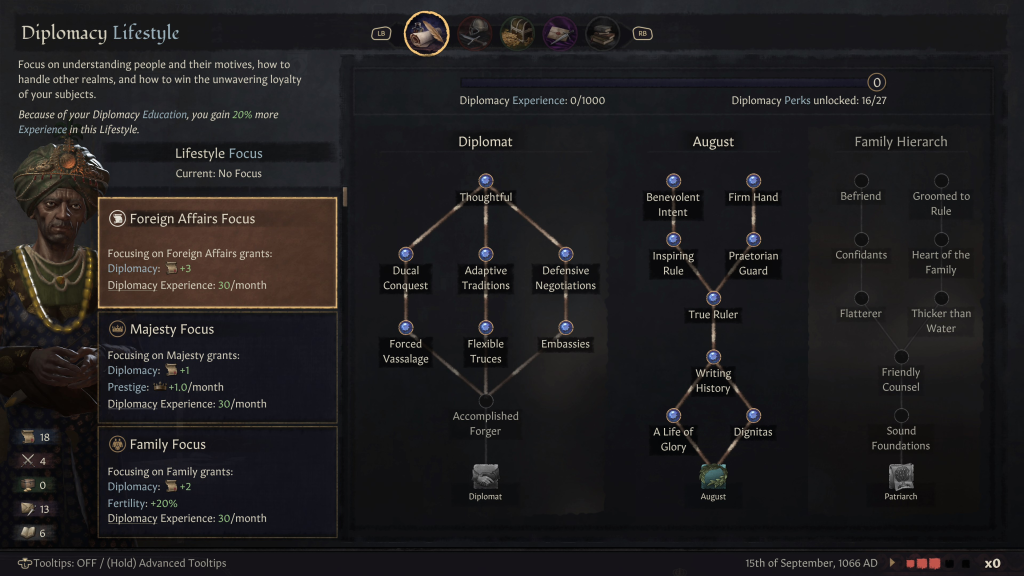
[A screenshot from Crusader Kings III. The controls flow of your game needs to be optimised for whichever platform it’s being ported to. Players need to have logical and accessible ways to use the controls to best play and navigate the game.]
Accessibility: If you’re taking a game from a large screen device – like PC or console – and porting it onto something smaller, like mobile, you need to make sure all text is accessible. This is done through Interface and UI adjustments which can flex to the new screen type, aspect ratio or size.
In control of the controls: Different platforms have different ways for a player to interact – if you’re taking a game from Console to PC, you have to ensure using both the mouse and the keyboard feels natural. If you’re headed to mobile, you have to design and implement an on-screen navigation and control system. It has to feel intuitive and natural for the player to use.
Performance: Last, but certainly not least, is performance. No one wants to play a game that doesn’t run well. A game on PC is going to run very differently to how it would on console or in handheld, and we do a lot of work in the beginning to identify the lowest performing platform and build up from there – we make suggestions for things to change, we identify the assets that need to be optimised, and we do everything we can do ensure the visual style and character of the game is maintained and running well.
SUPPORTING OUR PORTING PARTNERS
Porting a game presents publishers and developers with a huge opportunity to reach new audiences and see their game picked up by more players. Searches like ‘best games for console/PC/VR/Switch/mobile’ are always flourishing, with players keen to find out the best games to pick up on their preferred console.
By utilising tools like Google Trends, publishers are even able to see if their game is in demand globally for a particular platform and make informed decisions about which titles to look at porting next. The below capture pulled from Google Trends shows search volumes for H1 of 2024 (1st January 2024 – 30th June 2024) and it’s clear to see that curious players keep returning to find out which games they should be playing.

[Taken from Google Trends for searches 1st January 2024 – 30th June 2024. The Search Volume term used is ‘best games for Switch (blue), Console (red), VR (yellow), PC (green) and Mobile (purple)]
This demand from players is just one reason a publisher might look to port a game, it can also be due to popularity of the title upon original release, or that a different platform can offer new and interesting dynamics to the title. Whatever the reason, the goal is always the same: to create the best game possible for players to enjoy.
It’s important at the start of any porting project to clearly communicate and manage expectations, to identify and understand the reasoning behind the port and to outline the features and benefits that makes various platforms unique and desirable. The team at Lab42 are committed to ensuring partners understand how various platforms work, the pros and cons to each, the potential amendments that might be required for optimal performance on that platform, and more.
But the course of a great port doesn’t always run smoothly: more often than not, games aren’t designed with multiple platforms in mind which means there’s a period of exploratory work to identify how the game works, how it runs without any modifications on each desired platform, and a period of testing performance from the lowest spec, right up to top-of-the-line capability devices.
The result is often a game which captures all the original charm, features and capabilities of the original game, but optimised for various devices. Some of our favourite projects we’ve had the chance to work on include:
Porting to VR | Transforming Combat in Metal: Hellsinger VR: Knowing that combat is a key feature of Metal: Hellsinger, we transformed the weapons within the game to become physics-based so players can really feel the movement, the repercussions and cause damage. We took the Sword from the PC version – which was a projectile and functioned like a gun – and gave it weight and gravity so players could get more physically into the fights.
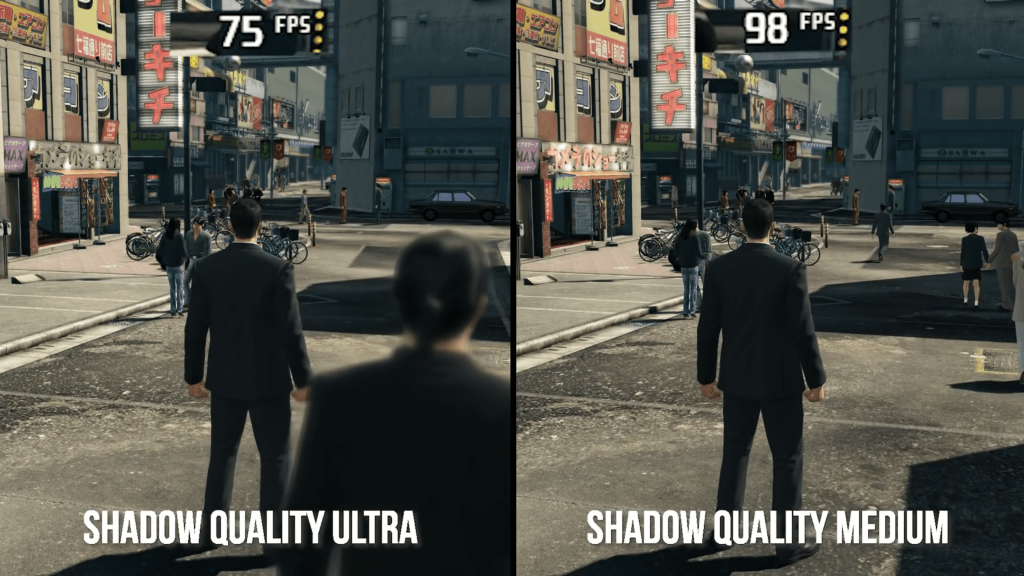
[Image taken from Digital Foundry review of Yakuza 0 on PC. Image Credit: Digital Foundry. Upgrading graphics in Yakuza from PlayStation to PC meant players were able to get a greater breadth of options to suit their display and graphics card. Areas throughout the game received added depth, more lighting and sharper details.]
Porting to PC | Enhancing Graphics for Yakuza 0: Originally developed for PlayStation 4 in 2015, we worked in partnership with SEGA to bring Yakuza 0 to PC for the first time in 2018 (you can read Digital Foundry’s review right here). Modernising a game for arguably the highest-performance platform (PC) was a very challenging but rewarding experience. We scaled the game to offer multiple resolution options, enhanced the shadow system, we increased the framerate (and fixed all the object glitches that arose as a result) and adapted the controls from gamepad to keyboard and mouse.
Porting to Console | Logical Controls for Crusader Kings III: Originally designed for PC, we worked with Paradox Interactive to bring Crusader Kings III to console. Utilising high-level strategy, the game’s controls lexicon needed to be totally designed to work away from a PCs mouse and keyboard set up, and function with precision on a console controller. As part of this, we had to tweak the UI to make everything easier to access and we redesigned the menu-flow and map so it would feel more natural to navigate.
TOP TIPS FOR PORTING
Everyone has their preferred way to play their favourite game from lovers of peak graphics on PC, those who like to snuggle in and get comfortable with Nintendo Switch, a living room gamer on PlayStation or Xbox Devices, a fan of the full immersion offered in VR or those who prefer take games on the go with mobile. Each platform has unique features and attributes which can create new and evolved experiences during the porting process.
Just some of the key things to consider for each platform are:
Porting to VR: In a VR game, the player is totally immersed in the action and every move they make has real-time, direct consequences in the game. Being at the heart of the action means the game needs to feel tactile and responsive, but also accessible and comfortable. It can be easy to overdesign when you’re trying to translate features from a console or PC version, and that can lead to motion sickness for VR players. Think outside of the box and ways to bring static features to life in ways that aren’t too overwhelming.

[A screenshot from Sonic Mania Mobile. Porting to mobile is a great way to get a game in front of a huge audience, but with so many devices and operating systems on the market, you have to ensure the UI/UX is scalable, legible and usable. If you don’t know how many rings Sonic is collecting, how can you know how fast you gotta go!]
Porting to Mobile: Mobile is the broadest platform to port to as there are so many different devices and operating systems on the market… all with slightly varying screen sizes. Controls and UI are the biggest considerations we make when porting a game to mobile: they have to fit within the extremely limited space available on a mobile screen, while being usable, accessible and legible. You have to design them to be scalable between devices, ensure they feel natural and easy to use and are reactive.
Porting to PC: PC has the capability to be the highest-performance platform but with so many variables, like different chipsets or graphics cards, you have to ensure the game will run smoothly on a broad spectrum of technology by deciding on a target minimum and building-in scalability. PC ports also require PC-specific graphics and audio settings, and remapped controls to from controller to keyboard and mouse.
Porting to Nintendo Switch: As of 2024, the Nintendo Switch is the most popular games console on the market globally. It’s wealth of titles, usability for all ages and reasonable price-point make it the perfect choice for lots of players. Because of this, lots of publishers want to see their game on the platform, which can be tricky when we consider the hardware is almost 10 years old. But for porting, you’ll need to consider Memory and whether the game is able to fit on the device without it crashing – often this involves stripping the game right down to core elements and building back up from here.
Porting to Console: Any console design needs to align with a ‘native’ console experience, and the game should feel like it’s designed for that platform. Incorporating the features of the console, including haptics, achievements, game help and tutorials, UI layout and flow and control mapping are all key considerations to be taken. Also, every console port must be first-party compliant, for PlayStation ports you have to ensure you’ve met all items on the Technical Requirements Checklist, and for Microsoft and Xbox, the Technical Certification Requirements must be fully catered for.

[A screenshot from Metal: Hellsinger VR. In the upcoming Metal: Hellsinger VR, players can strike terror into the hearts of demons and devils with more precision and force than ever before! Utilising the unique capabilities of VR, players will be able to feel the fire and engage in combat more physically – with transformed weapons , updated physics and more.]
BEYOND THE PORT | CREATING NEW REALMS IN VR
So, when is a port more than just a port? With every porting project that comes our way, we ask ourselves how we can give players something new and interesting to experience. For some titles, this might be optimised controls which create a unique experience, or new achievement or reward systems that keep them engaged… but most recently, it was dialling up the immersion for Metal: Hellsinger.
The original acclaimed rhythm shooter, originally developed by The Outsiders and published by Funcom is headed to VR later this year – and we can’t wait for players to experience this hypnotic experience in a whole new way.
The brief: Funcom wanted to bring the experience of Metal: Hellsinger to an entirely new realm: VR. The game – which is already released for PC and console – has an extremely dedicated and enthusiastic audience who had been calling out for their favourite beat rhythm FPS game to come to the platform in an all-new, immersive way.
The work: We got to work. VR games require a lot of involvement from Game Designers and Level Designers as the position of the player, and the three Cs (Camera, Controls, Character) are totally transformed. Just some of the changes we made included making areas of the game – that were previously not explorable – accessible to players by transforming objects to be physics-based for players to interact with. We changed the perspective of the camera to put the player in the dead-centre of the action, and changed the spawn position of enemies so they would appear with enough time for players to react. VR games are primarily movement based so we took combat in the game and made it much more movement based so players could get into the fights more physically.
The results: Metal: Hellsinger VR is a completely different game – it’s an evolution of what was and something brand new for fans of the franchise. There are lots of surprises for fans to discover, new ways to play and interact with surroundings and plenty of very satisfying, pulse-pounding gameplay to enjoy.
Want to hear more about how Sumo Digital can transform your game with the power of Porting? Get in touch to access our Case Studies.
Alternatively, visit the Services Page to discover how we can bring your game vision to life.



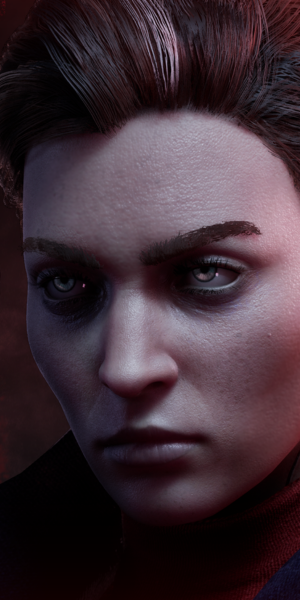 Vampire The Masquerade: Bloodlines 2
Vampire The Masquerade: Bloodlines 2 Exoborne
Exoborne Mars Horizon 2: The Search for Life
Mars Horizon 2: The Search for Life